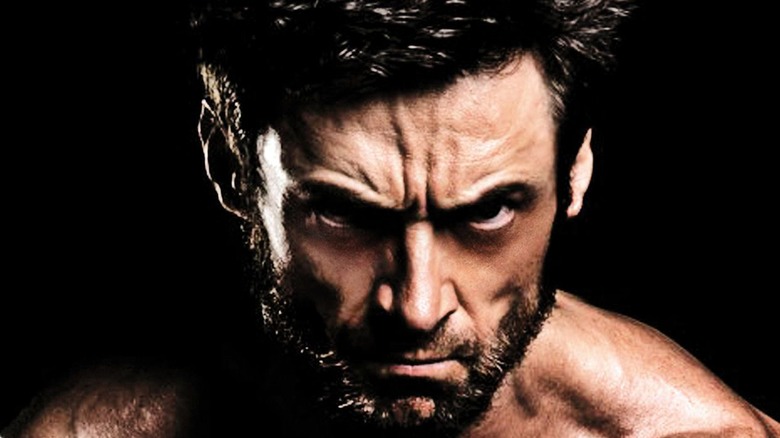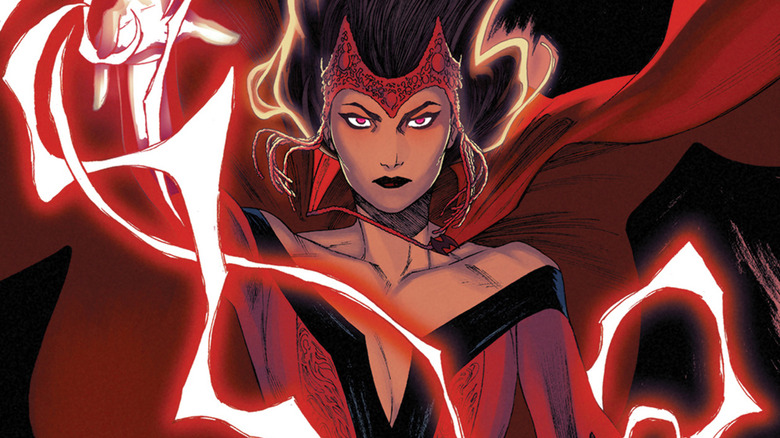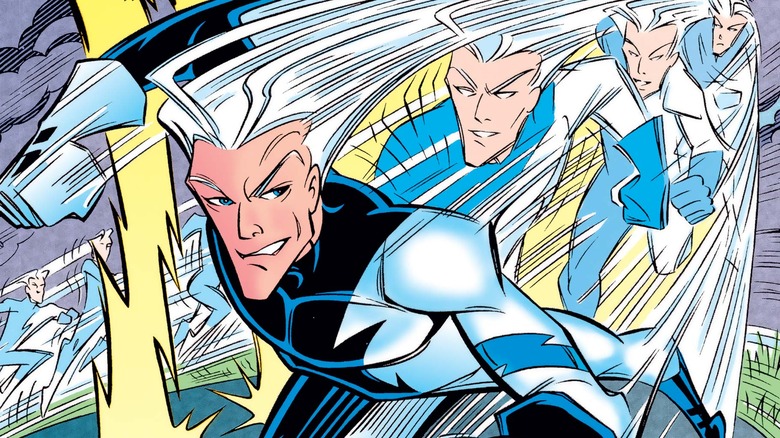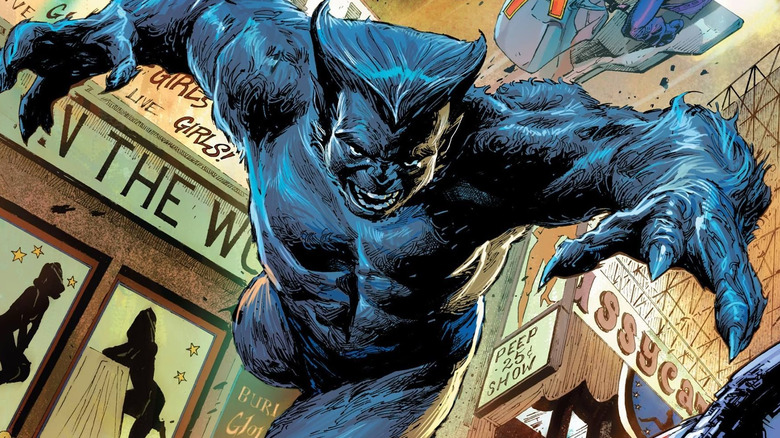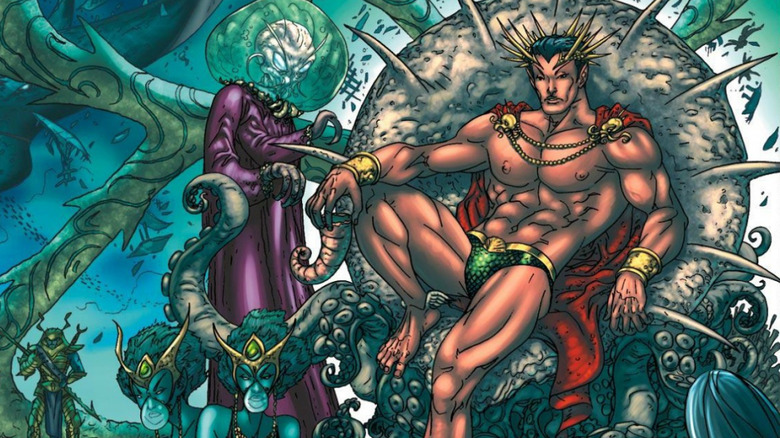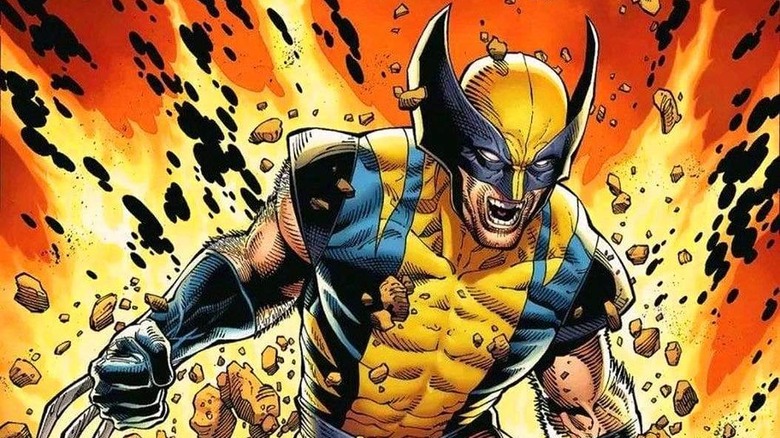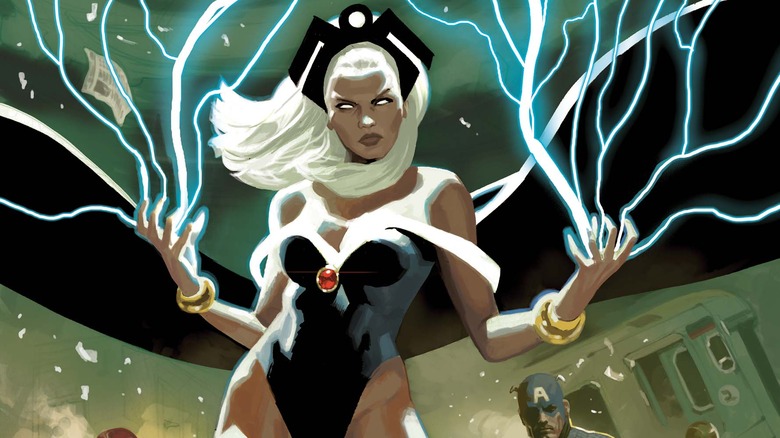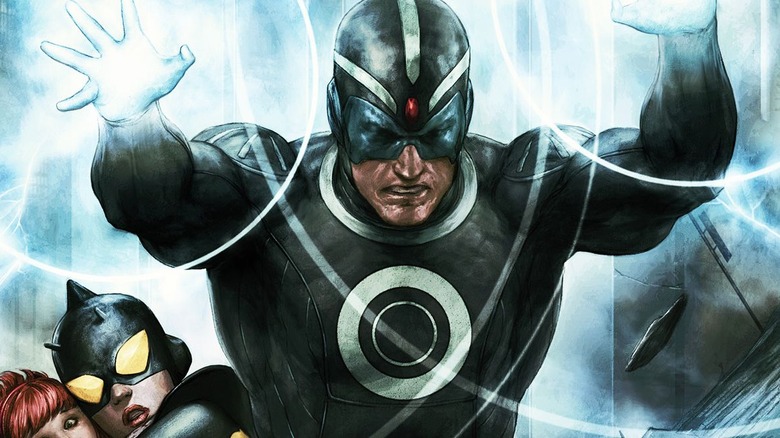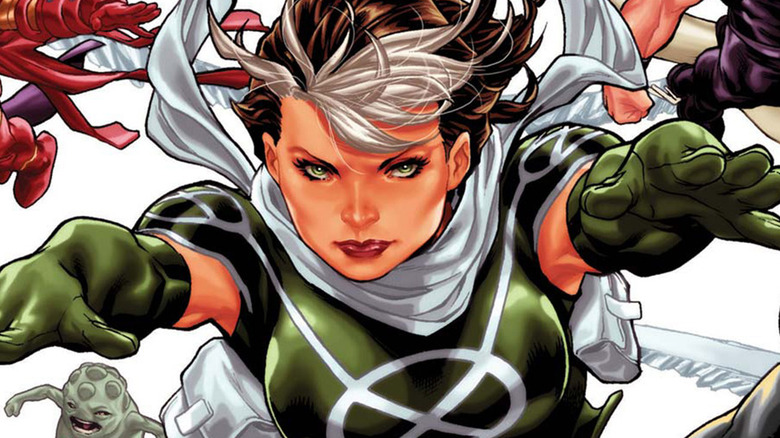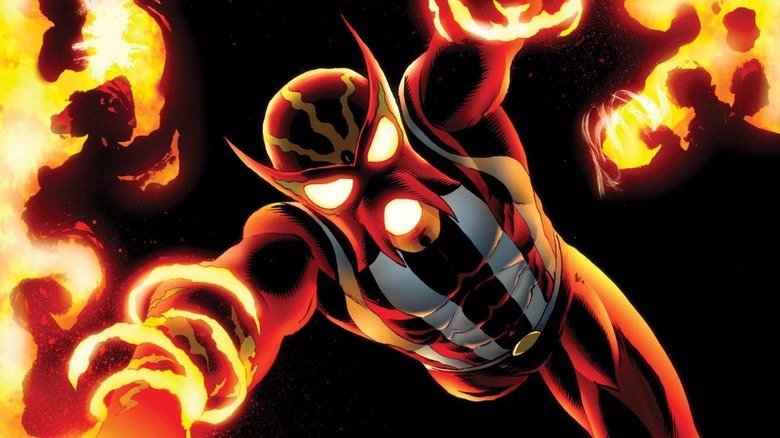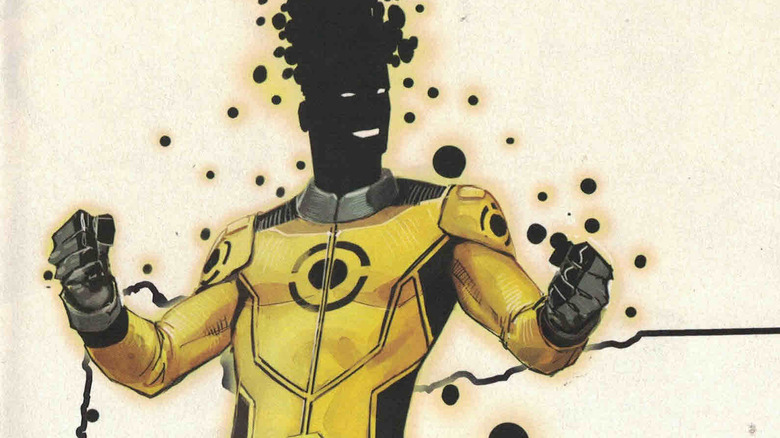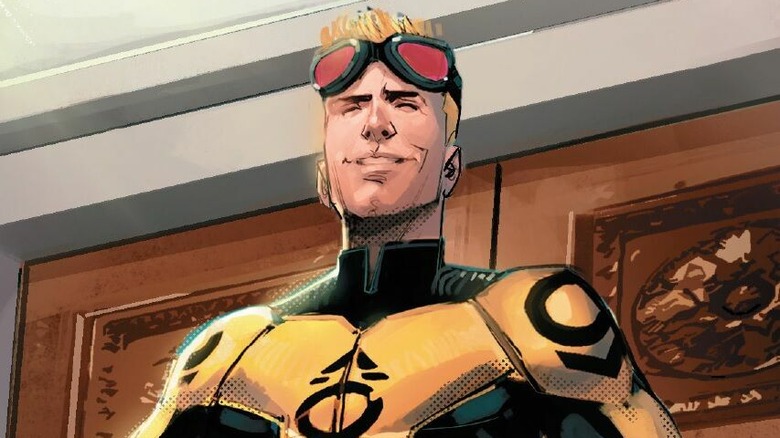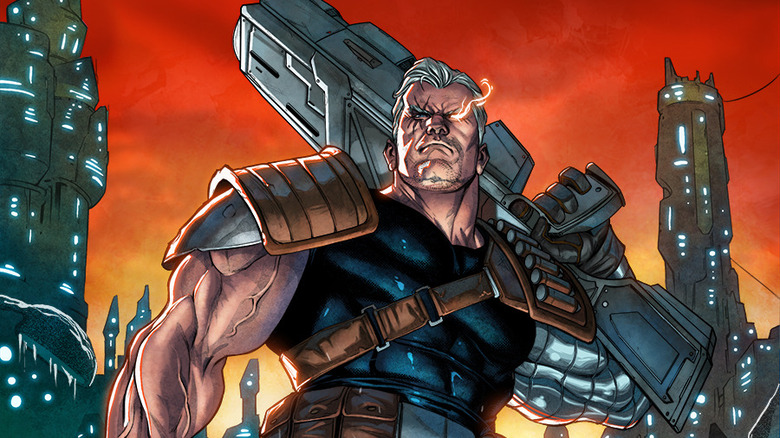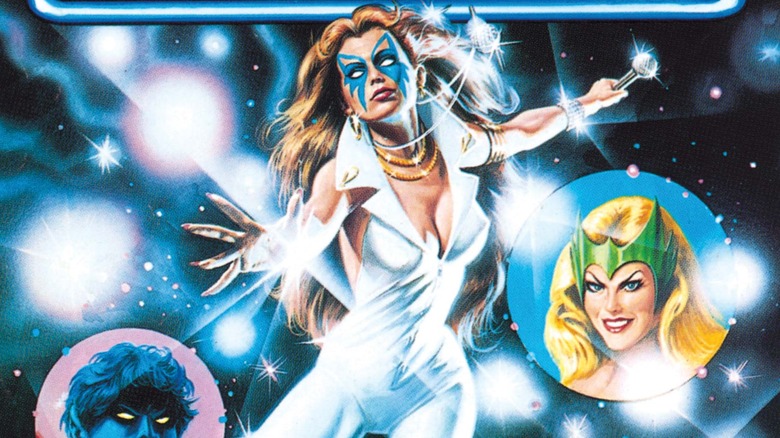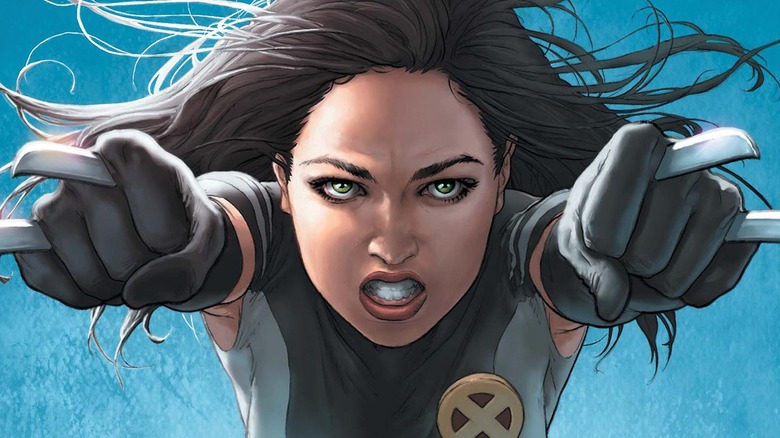X-Men Who've Also Been Avengers
In one corner there are the X-Men, the mighty team of mutants who seek to protect humanity and create a world where the two can peacefully coexist. In the other corner, there are the Avengers, Earth's Mightiest Heroes, who seek to protect the world from those who seek to rule or destroy it. Both teams have storied histories on the comic book page, and both have starred in wildly successful, innovative cinematic blockbusters — but in both cases, they've kept mostly to themselves.
This is easy to understand in the films, where intellectual property ownership has largely kept the properties apart for legal reasons. But even in the comics, where crossovers and cameos are extremely common, the two teams often feel like they exist within their own separate worlds, each franchise telling its own tales without stepping on the other's toes.
Despite this separation, however, the two teams do have a history of teammates switching sides. In fact, some characters who began their careers on the X-Men eventually went on to become far more widely known as Avengers — the following heroes being the best examples.
Scarlet Witch
Wanda Maximoff (aka the Scarlet Witch), sometimes daughter of Magneto and founding member of the Brotherhood of Evil Mutants, has long been firmly attached to the X-Men franchise. She first appeared in 1964 in their fourth issue ever, was a major villain in the "X-Men: Evolution" animated series, a playable character in the "X-Men Legends II: Rise of Apocalypse" video game, and the main person responsible for the M-Day Decimation that almost wiped mutants out after the X-Men event "House of M."
Despite this, the Scarlet Witch is far better known as an Avenger. This is in no small part thanks to the major role she plays in the Marvel Cinematic Universe, where she featured in four of the Infinity Saga's largest films before going on to marry a fellow Avenger and costar in her own television series, "WandaVision." These appearances embedded her within the hearts of viewers all over the world, and since mutants and the X-Men don't exist in the MCU at this point, it's no wonder fans think of her as an Avenger first.
But her long history with the team actually began in 1965's "Avengers" #16, when every founding Avenger decided to take a leave of absence. This left Captain America to lead a "kooky quartet" of former villains who wanted to reform: the Scarlet Witch, Quicksilver, and Hawkeye. Unlike her brother, however, Wanda never really left the team, remaining an important member for the vast majority of her publishing history.
Quicksilver
Pietro Maximoff, the fleet-footed Quicksilver, first appeared in 1964's "X-Men" #4 as a founding member of Magneto's Brotherhood of Evil Mutants. He clashed with the X-Men on numerous occasions before finally leaving Magneto behind alongside his sister Wanda to join the Avengers in their 16th issue in 1965. He's usually the son of the X-Men's greatest villain, is often a member of X-Factor, and frequently appears in the team's expanded media.
Like his sister, he eventually became more closely associated with other Marvel properties like the Fantastic Four and the Inhumans, especially after he married and had a daughter with Crystal, one of the most important Inhuman characters in Marvel Comics. One significant event has likely forever established Quicksilver as the poster child of the Avengers and the X-Men's strange relationship: appearing in two separate film franchises, portrayed by two different actors, within a year of each other.
Though Disney now owns both 20th Century Fox and the X-Men film rights, they were still competitors back in 2014/2015. As such, characters within the X-Men franchise couldn't appear in Marvel's Avengers films and vice versa — in fact, MCU films couldn't even use names like "Quicksilver," "Scarlet Witch" or "mutant." Evan Peters played a young, impulsive Quicksilver in "X-Men: Days of Future Past"; Aaron Taylor-Johnson played a far more comic-accurate Pietro Maximoff in "Avengers: Age of Ultron."
The Beast
Despite the Maximoff twins' fame, Hank McCoy is still one of the most famous X-Men to join the Avengers. A founding member of the team, the Beast was introduced in 1963's "X-Men" #1 as one of Professor Xavier's original class of mutants. He served with valor alongside them against threats like Magneto, Blob, and the Brotherhood of Mutants — but after Hank earned his PhD, he left the team to work for the Brand Corporation in 1972's "Amazing Adventures" #11.
Unfortunately, Hank's life would change forever after he invented a serum that temporarily enhanced mutant abilities if the antidote was taken within an hour. Forced to use the serum to keep his research from being stolen, Hank failed to take the antidote in time and was permanently transformed into the werewolf-like Beast. Depressed and filled with resentment at his mutation, the Beast refused to turn to the X-Men for help, but did ultimately apply to join the Avengers in 1975's "Avengers" #137.
The Beast was accepted as a probationary member in issue #138 until he fully joined the team in #151, now serving alongside his former enemy, the Scarlet Witch. Afterwards, his outlook on life significantly improved. As an official Avenger, the public began to accept his animal-like appearance and thus, Hank started to as well. Though he would eventually return to the X-Men for good, he stayed with the Avengers for quite some time and formed one of the comic's best friendships with Simon Williams, a.k.a. Wonder Man.
Namor
Namor the Submariner, King of Atlantis, is perhaps the oldest and most famous Marvel character to still not have appeared in live action. What he has done, however, is serve as an important, contentious member of both the Avengers and the X-Men.
The son of human sailor Leonard McKenzie and the Atlantean Princess Fen, Namor is far older than he appears. He first revealed himself to the outside world to join the Allied Powers during World War II after Nazi divers were discovered near Atlantis. An anti-hero at heart, however, Namor later vowed to annihilate the surface world after he was led to believe that Atlantis had been destroyed.
In this capacity, Namor fought both the Avengers and the X-Men as one of the earliest villains faced by each team, but after he uncovered the survival of Atlantis, he eventually joined the Avengers in issue #262 in 1985, serving alongside the team until his extreme temper led him to leave the team in a huff. After his mutant status was reconfirmed in "House of M," Namor also began to work with the X-Men, officially accepting his place among mutantkind in 2009's "Uncanny X-Men Annual #2 and formally joining the team shortly thereafter.
Wolverine
Wolverine is a loner; that's kinda his thing. Nonetheless, he spends a lot of time on teams.
After Chris Claremont revitalized the X-Men in "Giant-Size X-Men #1," the X-Men-to-Avengers conversion rate basically fell to zero for decades until Brian Michael Bendis relaunched Earth's Mightiest Heroes in 2004 with "New Avengers" #1. In an attempt to revitalize Marvel's longstanding superhero team, Bendis decided to create an Avengers line-up that actually consisted of Marvel's most popular characters, allowing many heroes like Spider-Man, Daredevil, Wolverine, and Luke Cage to finally join the team for the first time alongside Captain America and Iron Man.
Created in 1974 by Roy Thomas, Len Wein, and John Romita and introduced as an enemy of the founding Avenger known as the Hulk, Wolverine has become one of the most popular superheroes on the planet, so his membership in particular seemed long overdue. Since joining the Avengers, Wolverine has continued his long-running tenure on the X-Men as well, and now commonly features in the stories of both teams.
Storm
Introduced in "Giant-Size X-Men" #1 by Chris Claremont and Dave Cockrum in 1975, Ororo Munroe (a.k.a. Storm) is one of the most popular X-Men. Born in Kenya, Ororo lived in Egypt as an orphaned pickpocket until she developed her mutant powers. Now able to control the very weather itself, she returned to her homeland and lived there as a sort of goddess until she accepted Professor Xavier's offer to join his X-Men.
She's been a mainstay of the team ever since, becoming one of the only five members to be included in their first theatrical film. As one of the more mature and independent X-Men, Storm often serves as a teacher at Xavier's schools and as the leader of the team itself.
Ororo gained her first significant tie to the Avengers in 2006 when she married King T'Challa of Wakanda in "Black Panther" #18. As the Queen of Wakanda, she began spending less time with the X-Men, briefly served on the Fantastic Four alongside her husband, and eventually joined the Avengers in 2012's issue #21.
Her Avengers team was lead by Captain America and also featured Iron Man, the Red Hulk, the Protector, Spider-Woman, Hawkeye, Quake, and Vision. She helped the team defeat Norman Osborn and his H.A.M.M.E.R. organization, which was basically an evil version of SHIELD. She ultimately left the team later that same year, when she sided with her original team during Marvel's "Avengers vs X-Men" event.
Havok
After Marvel's 2012 event "Avengers vs X-Men," the wall between the two groups crumbled and large number of X-Men began calling the Avengers home. The first of them was Alex Summers, aka Havok. The younger brother of famed X-Men leader Cyclops, Havok has the power to absorb energy and fire circular blasts of plasma from his very finger tips. He was introduced in 1969 in X-Men #54 and has remained a common member of the team and its spin-off groups ever since.
In the wake of the Avengers' brief war with the X-Men, Captain America hand-picked Havok to be the leader of the team's Unity Division in "Uncanny Avengers" #1. This grouping was a new branch of the Avengers which consisted of members from both teams and whose sole purpose was to promote Professor Xavier's dream of a peacefully unified human and mutantkind. He served as the team's leader with distinction for some time, before leaving after successfully defeating Kang, Apocalypse, and the Red Skull.
Rogue
Born in Mississippi with the power to absorb other beings' life force, powers, memories, and personhood through skin-to-skin contact, Rogue was essentially raised by the villainous Mystique as her daughter before recruiting her into the Brotherhood of Evil Mutants. It was during this time that Rogue made her first contact with the Avengers when, during a fight with Carol Danvers (the popular heroine now best-known as Captain Marvel), Rogue absorbed and managed to permanently copy Danvers' memories, super-strength, invulnerability, and flight powers.
After she gained these abilities, she and the rest of the Brotherhood of Evil Mutants tried to destroy the Avengers, but were ultimately defeated. When having Carol's memories in her head proved too much to handle, Rogue turned to Professor Charles Xavier for help and ultimately joined the X-Men, where she has remained ever since.
After the "Avengers vs X-Men" event, Rogue was one of the X-Men who joined Havok's Avengers Unity Division and helped fight anti-mutant threats like the Red Skull. In one such adventure from "Uncanny Avengers" #21, Rogue absorbed the powers of literally every member of both the X-Men and the Avengers in order to keep a Celestial from stepping on the Earth and destroying it.
Sunfire
Born and raised in Japan, Shiro Yoshida used his mutant ability to generate "solar fire" to become Sunfire, wearing a costume that adopted imagery from Japan's various national flags. When the original X-Men became trapped on Krakoa, Sunfire joined Professor Xavier's group of New X-Men in 1975's "Giant-Size X-Men" #1 to rescue them. Sunfire fought alongside Storm, Wolverine, Colossus, Banshee, Nightcrawler, and Thunderbird to free the original five X-Men, Havok, and Polaris.
After the mission, however, Sunfire immediately left the group. He revealed that he had only joined to introduce himself as a warrior to the world, and now that he'd done this, he was returning to the only thing to which he was truly loyal: Japan. Afterwards, Sunfire appeared sporadically, typically operating in Japan until stints as a brainwashed Horseman of Apocalypse and then as a Marauder left him feeling disgraced and as if he was no longer worthy of being a hero.
It was in this state that Wolverine approached Shiro in "Uncanny Avengers" #5 and offered him a place in the Avengers Unity Division. Though Yoshida initially rejected the offer, when Wolverine revealed how Red Skull had desecrated the corpse of the recently-deceased Charles Xavier, Sunfire immediately agreed to help Avenge his old ally.
Sunspot
When Professor Xavier believed his X-Men had perished, he vowed to return to his original mission of helping young teenagers learn to safely control their powers. Thus, he started teaching another generation of "New Mutants" in 1982's "Marvel Graphic Novel" #4.
Brazilian Roberto Da Costa was one of these new students, and he possessed the power to absorb solar energy and channel it in order to fly, enhance his strength, and project blasts of heat, plasma, and other related types of energy. Sunspot worked alongside his fellow New Mutants for some time before finally "graduating" to X-Force.
His relationship with the Avengers, however, began far more recently in 2012's "Avengers" #2. Fearing a day when the primary Avengers might not be enough, Iron Man and Captain America worked together to form a network of heroes that could be called upon to serve as Avengers should the need arise — and when the main members were defeated by a new threat on Mars, the call was sent, and Sunspot answered it.
Since then, Sunspot has created quite a history for himself as an Avenger by founding two different new branches of the team. After becoming the leader of the current group of "New Avengers," he bought the long-villainous organization known as A.I.M. and reorganized it as the new "Avengers Idea Mechanics." Then, he struck a deal with the United States government and formed the "U.S. Avengers" to function as a part of SHIELD's intelligence division.
Cannonball
Born in Kentucky, Samuel Guthrie was another of the "New Mutants" that Professor Xavier took under his wing in 1982's "Marvel Graphic Novel" #4. He has the power to create impenetrable shields and propel himself forward at blistering speeds by releasing energy from his skin as a sort of thruster or internal jet pack. The combination allows Sam to truly become a "Cannonball" and safely launch his fully-shielded body at his opponents with incredible, crushing force.
He joined his best friend, Sunspot, when they "graduated" to X-Force and later again when they both decided to answer Captain America and Iron Man's calls to create the largest ongoing Avengers roster ever in "Avengers" #2 in 2012. Together, the two friends worked to transition from feared, hated mutants to beloved celebrity superheroes as the Beast had done so long ago. Sam eventually fell in love with and had a child with fellow Avenger Izzy Kane (aka the Smasher), and they both followed Sunspot once again as the hero formed and led his various Avengers offshoot teams.
Cable
The son of Scott Summers and a clone of Jean Grey from the future, Nathan Summers (aka Cable) has a complicated story to say the least. First appearing as an infant in "Uncanny X-Men" #201, he was born and experimented on as part of a long and intricate plot by Mr. Sinister to finally create a mutant powerful enough to kill Apocalypse. After a dash of demon possession and Celestial child-rearing, Cable was infected with a "techno-organic virus" that ultimately gave him the cybernetic look he's famous for.
In an effort to save his son's life, Cyclops agreed to have Cable sent two-thousand years into the future, to a time with sufficiently advanced technology to save his life. Unfortunately, that future was ruled by Apocalypse, so Cable grew up as a future mutant rebel freedom fighter. He's a life-long soldier who frequently returns to the present day X-Men to work with his parents to help improve the future of Mutantkind.
When the Avengers sought to stop the Phoenix Force from bonding with the first mutant child to be born after the M-Day Devastation of "House of M," Cable was one of the main figures responsible for encouraging the X-Men to go to war with Earth's Mightiest Heroes. After "Avengers vs X-Men" was over however, Cable eventually joined the second roster of the Avenger's Unity Squad in 2016's "Uncanny Avengers" #2 alongside his on-again-off-again partner Deadpool.
Dazzler
A Long Island local, Alison Blaire dreamed of becoming a singer, and when she discovered she had the mutant power to convert sound into various types of light, she did exactly that, crafting magnificent stage shows in which she used the sound of her music to create the dazzling light displays that inspired her stage name "Dazzler." Alison was introduced in 1979's "Uncanny X-Men" #130, when the Hellfire Club and the X-Men both sent teams to one of her performances in the hopes of recruiting her to their cause.
Though she initially rejected both invitations in favor of focusing on her music career, she eventually became more and more embroiled in the world of super-heroics until she finally joined the X-Men in full in 1987's "Uncanny X-Men" #214. She worked with various X-Men teams for some time, and even encountered the Avengers multiple times, frequently working with the Beast while he was a member of Earth's Mightiest Heroes.
After taking part in "Avengers vs X-Men" and briefly working with SHIELD, Dazzler finally joined the Avengers during 2015's "Secret Wars" mega-event. Introduced in "A-Force" #1, the team was an all-female Avengers offshoot that sought to protect one of the surviving pockets of reality within Dr. Doom's Battleworld. When the world was restored to normal, Dazzler helped form the group again in the Prime Marvel Universe alongside She-Hulk, Captain Marvel, Medusa, Singularity, Nico Minoru, and Jane Foster's Thor.
X-23
When a top-secret scientific program failed to clone Wolverine twenty-two times, geneticist Sarah Kinney used her own DNA to create a female clone of the mutant that they dubbed "X-23." The program experimented on X-23 extensively, raised her to be a living weapon, and modified her skeletal structure so that she had one Adamantium claw in each foot and only two in her arms.
By age eleven, her services as an assassin were being sold by the program to the highest bidder, but when she was forced to kill her "mother" Sarah, X-23 finally escaped. In her final moments, however, Sarah had given X-23 a real name: "Laura Kinney." Her first attempts to remain free and independent failed more often than not, but she eventually found her "father" Wolverine, and was enrolled in Professor Xavier's Institute. The character's tale was somewhat depicted in 2017's "Logan," with Laura played by actress Dafne Keen.
With the X-Men, she finally knew a small measure of peace and safety, and went on to serve on several of the team's offshoot groups like X-Force. She struggled to reign in and grapple with her years spent as a hired killer, and ultimately left the X-Men to join the "Avengers Academy" after she was invited to join by Black Widow. While ostensibly a training facility to raise the next generation of Avengers, it was really a place where the Avengers could attempt to help young potential future supervillains grow up to be heroes instead.
